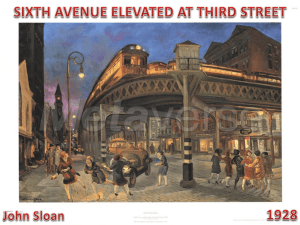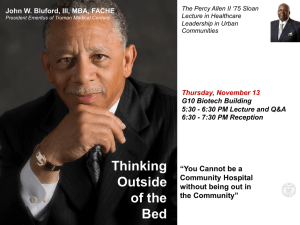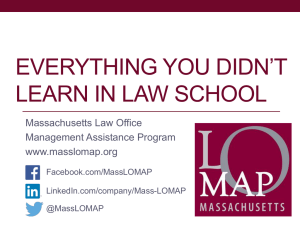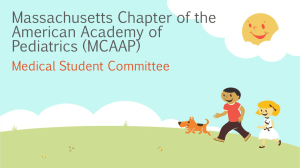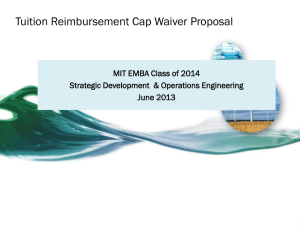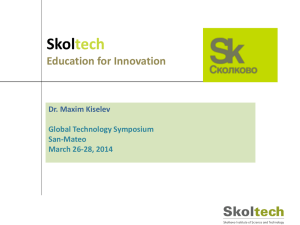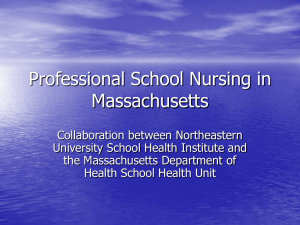Slides: The Science of Social Media Influence
advertisement
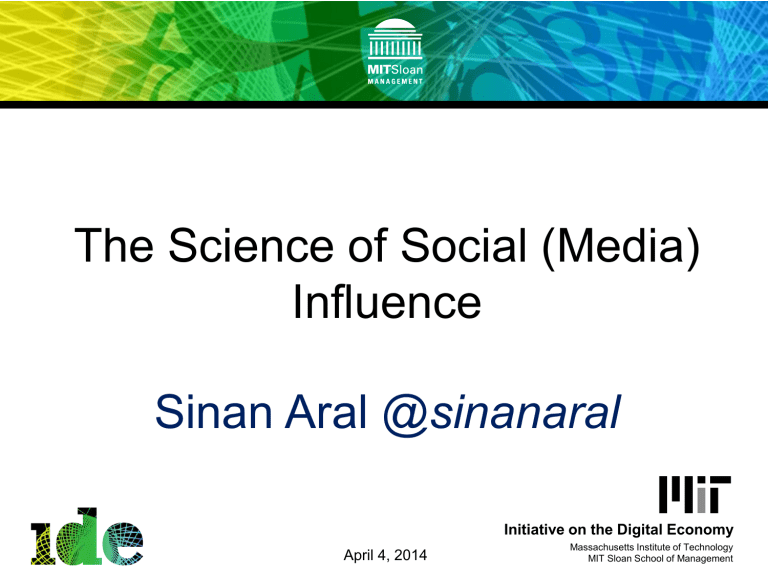
The Science of Social (Media) Influence Sinan Aral @sinanaral Initiative on the Digital Economy April 4,1 2014 Massachusetts Institute of Technology MIT Sloan School of Management @sinanaral Explosion of Digital ‘Social Signals’ From Peers and ‘The Crowd’ Initiative on the Digital Economy Massachusetts Institute of Technology MIT Sloan School of Management @sinanaral @sinanaral @sinanaral Initiative on the Digital Economy Massachusetts Institute of Technology MIT Sloan School of Management @sinanaral Causal Inference Initiative on the Digital Economy Massachusetts Institute of Technology MIT Sloan School of Management @sinanaral Source: Bloomberg.com @sinanaral Source: Bloomberg.com @sinanaral Source: Bloomberg.com The “Reflection Problem” @sinanaral Human behaviors cluster in network space and time… but is this because of peer influence or alternate explanations? Initiative on the Digital Economy Massachusetts Institute of Technology MIT Sloan School of Management @sinanaral “If you see a crowd of people all put up their umbrellas at the same time, you don’t assume that social influence is responsible.” – Max Weber Global IM Network of 27 Million Users from Yahoo! (Daily Traffic) Detailed demographics and geographic data. Comprehensive, detailed and precise data on online behaviors/activities. Day by Day adoption and usage of a mobile service application (Yahoo Go) launched in July 2007. (532,365 Adopters) 12500 1 0.9 Dot Product Adopters per day 10000 7500 5000 2500 0 Jul 1 Aug 1 Sep 1 Oct 1 Nov 1 0.8 0.7 Jul 1 Time dTshuffled) s 0.06 Aral, Muchnik & Sundararajan (2009) “Distinguishing Influence Based Contagion from 2 0.05 Homophily Driven Diffusion in Dynamic Networks,” PNAS, December. @sinanaral P(Adoption | Friend Adopts) 16 14 INFLUENCE 12 Controlling for correlated preferences and confounding effects 10 8 6 4 2 0 20 40 60 80 100 120 140 160 DAYS SINCE LAUNCH Initiative on the Digital Economy Massachusetts Institute of Technology MIT Sloan School of Management @sinanaral “VIRAL DESIGN” Can we engineer products so they are more likely to be virally shared? Aral & Walker (2011) “Creating Social Contagion through Viral Product Design: A Randomized Trial of Influence in Networks,” Management Science, September. @sinanaral The Setup App Randomly Enabled Viral Messaging. Observed the Adoption and Use of the App by Friends of Control and Experimental Group Users. Initiative on the Digital Economy Massachusetts Institute of Technology MIT Sloan School of Management @sinanaral Which Features Spread Contagion Best? Personal Invitations Influence Per Message Global Diffusion Stickiness ↑6% Passive Awareness ↑2% ↑98% ↑246% ↑17% 0% @sinanaral @sinanaral @sinanaral Experiment 2 We Randomized Receipt of Notifications Only a Randomly Selected Subset of Neighbors Receive Passive Viral Messages Allows us to test: Randomized Trails o Influence and Susceptibility to Influence Initiative on the Digital Economy Massachusetts Institute of Technology MIT Sloan School of Management @sinanaral Susceptibility to Influence 2 1,9 1,8 1,7 1,6 1,5 1,4 1,3 1,2 1,1 1 Single Relationship Engaged Married Its Complicated Initiative on the Digital Economy Massachusetts Institute of Technology MIT Sloan School of Management Patterns of Influence in Network Data @sinanaral My Experience Rating DOJO on Yelp… @sinanaral Social Influence Bias 25% ↑ in Mean Ratings Muchnik, L., Aral, S., Taylor, S. (2013) “Social Influence Initiative on the Digital Economy Massachusetts Institute of Technology Bias: A Randomized Experiment.” Science, August. MIT Sloan School of Management @sinanaral A “Superstar” Effect Positive herding snowballs into “Ratings Stardom.” 30% more likely to exceed a score of 10 Mean rating = 1.9 Negative herding is neutralized by the correction effect. @sinanaral Implications Encourage positive customers to rate early. Does fraud prevention work? What does herding mean for sales, stock prices, prediction markets? Do polls predict or drive election results? Initiative on the Digital Economy Massachusetts Institute of Technology MIT Sloan School of Management Personalized Social Advertising (A 250M Person Experiment) Facebook “Social Ads” @sinanaral Initiative on the Digital Economy Massachusetts Institute of Technology MIT Sloan School of Management @sinanaral @sinanaral @sinanaral Thank You! Sinan Aral @sinanaral Initiative on the Digital Economy April 4, 322014 Massachusetts Institute of Technology MIT Sloan School of Management
